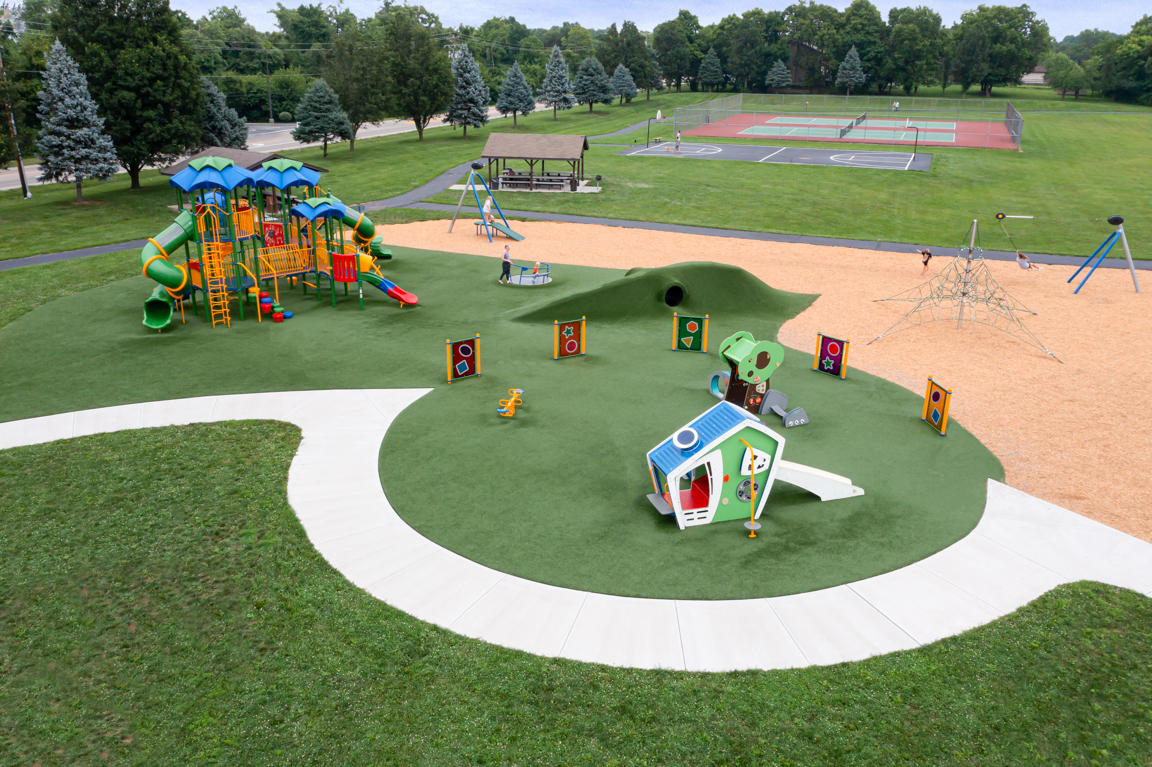Unleashing Creativity: The Magic of Sensory Panels on Playgrounds
Posted by May Recreation Content Team on

As screen time becomes more and more tempting for both children and parents, the importance of engaging in outdoor play remains as imperative to growth and development as it's ever been. In some ways, playgrounds haven't changed; they continue to offer opportunities for exploration and adventure, supporting physical, emotional, and social development in children.
In other ways, though, innovation in recent years has transformed playgrounds, making them more inclusive - and even therapeutic - for all children, but especially those with sensory disabilities. This is critical as we're becoming more aware of the prevalence of sensory processing disorders. One of those innovations is the addition of sensory panels.
What are Sensory Panels?
Sensory panels are textured, colorful panels that can stand alone, be integrated into playground equipment, or be used to build mazes or other configurations. Sensory panels are characterized by bright colors, varying textures, different shapes, and even interactive activities and instruments.
Generally speaking, sensory panels are associated with inclusive playgrounds, or playgrounds that are designed to bring together neurotypical and neurodivergent children, so all children feel included and accepted. More and more schools and communities are working to make all of their playgrounds more inclusive.
Types of Sensory Panels
A wide variety of sensory panels can be incorporated into a playground to promote free play:
- Tactile panels feature textures, surfaces, and materials to explore and stimulate the sense of touch.
- Sound panels incorporate instruments like drums, chimes, and xylophones that make distinct notes or sounds when struck.
- Visual panels stimulate the sense of sight and incorporate bright colors, shapes, letters, numbers, and patterns.
- Puzzle panels often incorporate movable pieces that require thought and problem-solving.
In many cases, sensory panels are translucent, which means 'players' can tell when a friend is on the other side - and even interact with the friend - without having to make eye contact. This can be especially helpful when practicing social skills.
The Benefits of Sensory Panels
All children enjoy playgrounds when sensory panels are incorporated because of the myriad of benefits:
- Sensory panels provide quiet corners and opportunities for independent play for children who prefer to play alone.
- They offer the perfect opportunity for children to practice playing together 'across' the panel without having to get too close or play directly together.
- They're designed to provide sensory experiences, which can be beneficial for children with sensory processing disorders, like those on the autism spectrum.
- It's easy for parents, caregivers, and siblings to play together for children who are less likely to venture out alone.
Because there is no right or wrong way to play, incorporating sensory panels into a playground encourages exploration, learning through play, and social interaction.
Who Benefits from Sensory Panels?
Everybody benefits! Children as young as a year old and children as old as twelve (and sometimes older!) enjoy sensory panels in playgrounds. Children who like to explore, run, crawl, feel, touch, and play love playgrounds with these innovative and inclusive features.
According to a survey conducted by the National Recreation and Park Association (NRPA), almost 9 out of 10 Americans believe their community should offer inclusive play options. To learn more about incorporating sensory panels into your playground, request a quote from May Recreation today.
